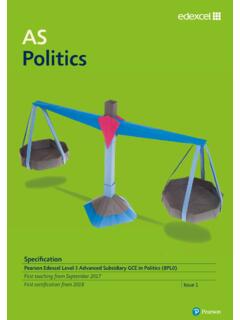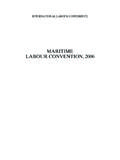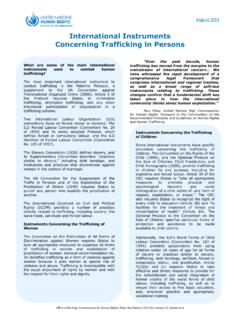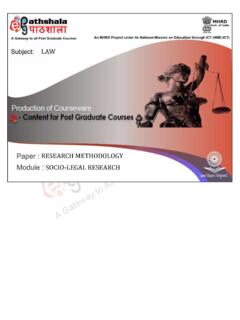Transcription of THE REFUGEE CONVENTION, 1951 - UNHCR
1 THE REFUGEE convention , 1951 THE TRAVAUX PREPARATOIRES ANALYSED WITH A COMMENTARY BY DR PAUL WEIS TABLE OF CONTENTS FOREWORD _____4 PREFACE _____5 INTRODUCTION _____5 BACKGROUND _____10 PREAMBLE _____12 ARTICLE 2. GENERAL OBLIGATIONS_____32 ARTICLE 3. NON-DISCRIMINATION _____35 ARTICLE 4. RELIGION _____37 ARTICLE 5. RIGHTS GRANTED APART FROM THE convention _____37 ARTICLE 6. THE TERM 'IN THE SAME CIRCUMSTANCES' _____38 ARTICLE 7. EXEMPTION FROM RECIPROCITY _____40 ARTICLE 8. EXEMPTION FROM EXCEPTIONAL MEASURES _____48 ARTICLE 9. PROVISIONAL MEASURES_____48 ARTICLE 10. CONTINUITY OF RESIDENCE _____59 ARTICLE 11. REFUGEE SEAMEN _____61 ARTICLE 12. PERSONAL STATUS _____64 ARTICLE 13.
2 MOVABLE AND IMMOVABLE PROPERTY _____80 ARTICLE 14. ARTISTIC RIGHTS AND INDUSTRIAL PROPERTY _____86 ARTICLE 15. RIGHT OF ASSOCIATION _____90 ARTICLE 16. ACCESS TO COURTS _____94 ARTICLE 17. WAGE-EARNING EMPLOYMENT_____98 ARTICLE 18. SELF-EMPLOYMENT _____107 ARTICLE 19. LIBERAL PROFESSIONS _____109 ARTICLE 20. RATIONING _____113 ARTICLE 21. HOUSING _____115 ARTICLE 22. PUBLIC EDUCATION _____117 ARTICLE 23. PUBLIC RELIEF _____123 ARTICLE 24. labour LEGISLATION AND SOCIAL SECURITY_____125 ARTICLE 25. ADMINISTRATIVE ASSISTANCE _____138 ARTICLE 26. FREEDOM OF MOVEMENT _____146 ARTICLE 27. IDENTITY PAPERS _____149 ARTICLE 28. TRAVEL DOCUMENTS _____152 ARTICLE 29. FISCAL CHARGES _____196 ARTICLE 30.
3 TRANSFER OF ASSETS _____198 ARTICLE 31. refugees UNLAWFULLY IN THE COUNTRY OF REFUGE_____201 ARTICLE 32. EXPULSION _____220 ARTICLE 33. PROHIBITION OF EXPULSION OR RETURN ('REFOULEMENT) _____233 ARTICLE 34. NATURALIZATION _____246 ARTICLE 35. CO-OPERATION OF THE NATIONAL AUTHORITIES WITH THE UNITED NATIONS _____252 ARTICLE 36. INFORMATION ON NATIONAL LEGISLATION _____259 ARTICLE 37. RELATION TO PREVIOUS CONVENTIONS _____262 The term 'R sidant R guli rement' ('Lawfully Staying') _____264 THE FINAL ACT _____268 FOREWORD One of the outstanding achievements of the 20th century in the humanitarian field has been the establishment of the principle that the REFUGEE problem is a matter of concern to the international community and must be addressed in the context of international cooperation and burden-sharing.
4 This notion first came into existence after the First World War, under the League of Nations which was called upon to deal with successive waves of refugees . It was further developed and strengthened after the Second World War through continuing action undertaken by the United Nations to address numerous REFUGEE situations in all regions of the world. Such REFUGEE situations remain a tragic feature of our troubled times. International cooperation in dealing with REFUGEE problems presupposes collective action by governments in working out appropriate durable solutions for refugees . Until an appropriate durable solution is found for them and refugees cease to be refugees either through voluntary repatriation or legal integration (naturalization) in their new home country, it is necessary for them to be treated in accordance with internationally recognized basic minimum standards.
5 The formulation and further developments of these standards - and efforts to ensure that they are effectively implemented - have from the outset been an essential component of the collective international approach to the REFUGEE problem. These standards are defined in a series of international instruments (conventions, resolutions, recommendations, etc), adopted at the universal level under the United Nations, or within the framework of regional organizations such as the Council of Europe, the Organization of African Unity and the Organization of American States. In order to ensure their more effective implementation, many of these standards have been incorporated into the national law of a growing number of countries.
6 At the universal level, the most comprehensive legally binding international instrument, defining standards for the treatment of refugees is the United Nations convention relating to the Status of refugees of 28th July 1951. This convention was adopted in the immediate post-World War II period, when the REFUGEE problems confronting the international community, were mainly those of refugees of European origin. It was for this reason that the convention contained a deadline which limited its application to the then known groups of refugees , persons who had become refugees as a result of events occurring before 1st January 1951. It was, however, recognized already at that time that the standards defined in the convention were of universal applicability, and the Conference which adopted the convention therefore included in its Final Act, Recommendation E in which it "Expressed the hope that the convention would have value as an example exceeding its contractual scope that all nations would be guided by it in granting as far as possible to persons in their territory as refugees and who would not be covered by the terms of the convention the treatment for which it provides.
7 " After the adoption of the 1951 convention , REFUGEE situations began to arise in different regions of the world, which were not in any way related to pre-1951 events. This led to efforts to make the convention fully applicable in all new REFUGEE situations, based on the recognition that the 1951 convention should become the universal international instrument for the protection of refugees . It resulted in the United Nations REFUGEE Protocol which removed the 1951 dateline in the convention and which was opened for accession on 31st January 1967. To date, 114 States in all regions of the world have become parties to the 1951 convention and/or to the 1967 Protocol. The author of the present commentary, the late Dr.
8 Paul Weis, played an active part in the work leading to the preparation of the 1951 convention and the 1967 Protocol and was Director of the Legal Division of my Office for a number of years up to his retirement in 1967. He was a universally recognized expert on International REFUGEE Law and was the author of numerous articles dealing with the basic international REFUGEE instruments, and a whole spectrum of issues relating to REFUGEE status and asylum. He was also the author of an important work on 'Nationality and Statelessness in International Law'. In October 1991, he was posthumously awarded the Nansen Medal in recognition of his major contribution to the development of international legal standards for the treatment of refugees .
9 It is a great source of satisfaction to me that Dr. Weis was able to write a commentary on Articles 2 to 37 of the convention based on the travaux pr paratoires. In addition to providing useful guidance for the interpretation of specific provisions of the convention , the travaux pr paratoires are of considerable historical significance. They illustrate in very graphic form the various issues which the REFUGEE problem presented for the international community at that time and the manner in which these issues were addressed both on the conceptual and on the practical levels. They sometimes display a remarkable similarity to many of the issues arising out of contemporary REFUGEE problems and thus provide a valuable point of reference.
10 I am certain that the commentary will contribute to a better understanding of the articles discussed and of the convention as a whole, and will also serve to focus renewed attention on the fundamental importance of recognized international legal standards for the treatment of refugees and their correct application. The existing body of legal principles for the treatment of refugees forms an essential part of our humanitarian heritage of which we can be justly proud. It therefore gives me particular pleasure to commend the present Commentary to the reader's attention. Dr Sadako Ogata United Nations High Commissioner for refugees PREFACE One of the principal objectives of the Research Centre for International Law since its establishment in 1983 has been the provision of basic materials of international law in readily accessible form for the use of scholars and practitioners.


















